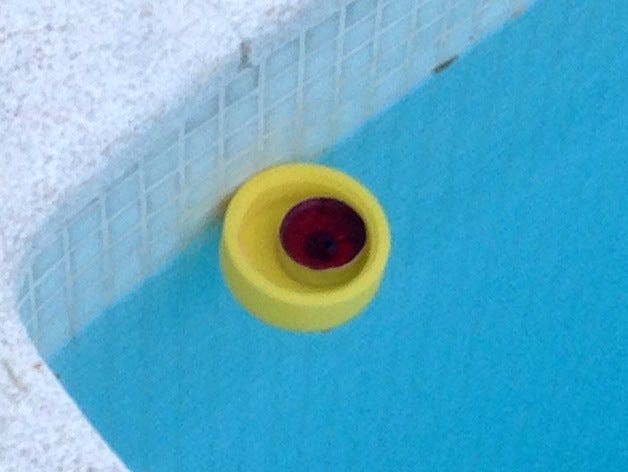Thingiverse

Floating candle #MakeItFloat by henriquepsantos
by Thingiverse
Last crawled date: 4 years ago
My entry for the #MakeItFloat challenge. I originally meant to make a floating raft with 8 floaters around a center base, but changed my mind quite quickly into another concept: a floating candle.
I decided to make a few calculations regarding the maximum weight/mass of the floater, and then predicting the amount of mass that the object could hold, and see how close to reality that prediction is.
From the calculations below, we predicted a maximum theoretical load of 125 g, though anything above 100 g would be more than enough to hold a meager candle.
From this point forward, there will be some simple physics for those interested.
What allows various objects to float in water is that the total density of the object is lower than that of the water. The word total there is important because even though cargo ships are made of some kind of metal, the air inside them has much lower density, allowing the ship to float.
The maximum cargo that the object can carry afloat is calculated as:
m = ρ * V
Where ρ is the density of the fluid (for water, it is 1 g/cm3) and V is the volume that was displaced.
Therefore, with a volume of around 150 cm3 (calculated through Fusion 360), the mass of water that is displaced is 150 grams.
With 10% infill, the floater has a total mass of around 25 g, meaning that, theoretically, we could support a maximum of 125 grams (let's say 100 g to be safe).
I decided to make a few calculations regarding the maximum weight/mass of the floater, and then predicting the amount of mass that the object could hold, and see how close to reality that prediction is.
From the calculations below, we predicted a maximum theoretical load of 125 g, though anything above 100 g would be more than enough to hold a meager candle.
From this point forward, there will be some simple physics for those interested.
What allows various objects to float in water is that the total density of the object is lower than that of the water. The word total there is important because even though cargo ships are made of some kind of metal, the air inside them has much lower density, allowing the ship to float.
The maximum cargo that the object can carry afloat is calculated as:
m = ρ * V
Where ρ is the density of the fluid (for water, it is 1 g/cm3) and V is the volume that was displaced.
Therefore, with a volume of around 150 cm3 (calculated through Fusion 360), the mass of water that is displaced is 150 grams.
With 10% infill, the floater has a total mass of around 25 g, meaning that, theoretically, we could support a maximum of 125 grams (let's say 100 g to be safe).
